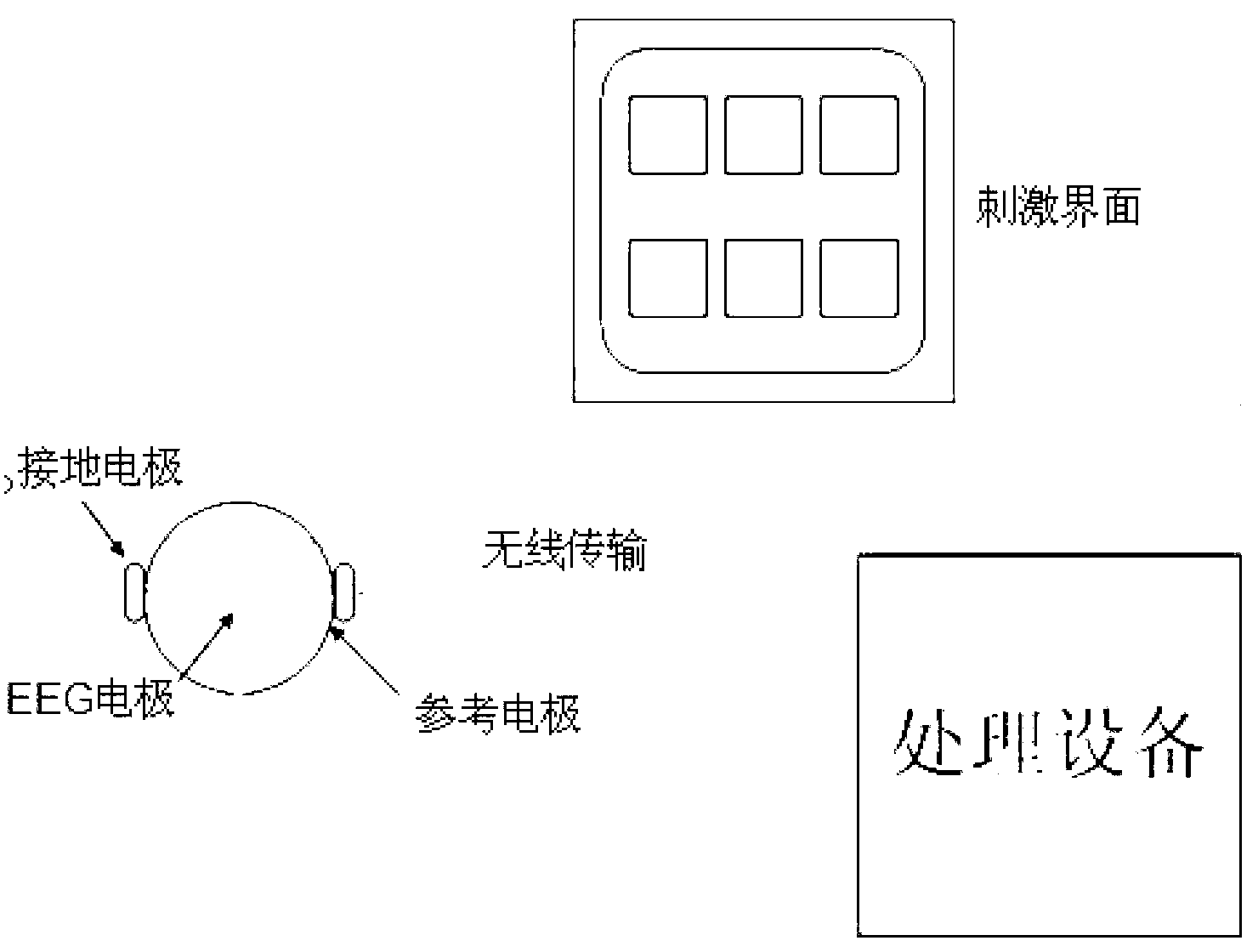Steady state visual evoked potential brain-computer interface signal identification method
A steady-state visual induction and signal recognition technology, applied in the field of neural engineering, can solve problems such as myoelectric signal interference, classification errors, and unstable EEG signals
- Summary
- Abstract
- Description
- Claims
- Application Information
AI Technical Summary
Problems solved by technology
Method used
Image
Examples
Embodiment Construction
[0031] DETAILED DESCRIPTION OF THE PREFERRED EMBODIMENTS The preferred embodiments of the present invention will be described in more detail below with reference to the accompanying drawings of the present invention.
[0032] A brain-computer interface method based on active confirmation of steady-state visual evoked potentials, comprising the following steps:
[0033] Step 1: In the occipital lobe O of the subject's head Z An electroencephalograph electrode (EEG electrode) is placed at the position, a reference electrode is placed at the position of one ear pinna, and a grounding electrode is placed at the position of the other ear pinna. signal (such as figure 2 and image 3 ), and use wireless devices and computers for data transmission, and use computers to store the collected EEG signals.
[0034] Step 2: Use the display screen to display the stimulus picture. First, the display screen will display a black screen for 10s. The purpose is to record the resting EEG signa...
PUM
 Login to View More
Login to View More Abstract
Description
Claims
Application Information
 Login to View More
Login to View More - R&D
- Intellectual Property
- Life Sciences
- Materials
- Tech Scout
- Unparalleled Data Quality
- Higher Quality Content
- 60% Fewer Hallucinations
Browse by: Latest US Patents, China's latest patents, Technical Efficacy Thesaurus, Application Domain, Technology Topic, Popular Technical Reports.
© 2025 PatSnap. All rights reserved.Legal|Privacy policy|Modern Slavery Act Transparency Statement|Sitemap|About US| Contact US: help@patsnap.com



